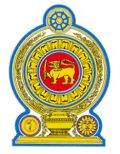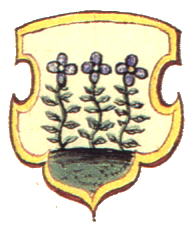Mannar: Difference between revisions
Jump to navigation
Jump to search
Knorrepoes (talk | contribs) m (Text replacement - "|Arms of {{PAGENAME}}]]" to "|Coat of arms (crest) of {{PAGENAME}}]]") Tags: Mobile edit Mobile web edit |
Knorrepoes (talk | contribs) m (Text replacement - "===Official blazon===↵↵===Origin/meaning===" to "{| class="wikitable" |+Official blazon |- |'''English''' | blazon wanted |} ===Origin/meaning===") |
||
| Line 5: | Line 5: | ||
[[File:mannar.jpg|center|Coat of arms (crest) of {{PAGENAME}}]] | [[File:mannar.jpg|center|Coat of arms (crest) of {{PAGENAME}}]] | ||
= | {| class="wikitable" | ||
|+Official blazon | |||
|- | |||
|'''English''' | |||
| blazon wanted | |||
|} | |||
===Origin/meaning=== | ===Origin/meaning=== | ||
Revision as of 14:06, 29 January 2024
Sri Lanka heraldry portal
This page is part of the Sri Lanka heraldry portal |
Heraldry of the World |
|
Civic heraldry:
|
Other heraldry: |
MANNAR
| English | blazon wanted |
Origin/meaning
The arms show the Indian Maddar plant, which was used to produce a bright red dye, an important export product in the 18th century. Mannar was known for its red textiles.
The above image dates from a manuscript dating from 1717/1720. The town currently does not use arms.
Contact and Support
Partners:
Your logo here ?
Contact us
© since 1995, Heraldry of the World, Ralf Hartemink 
Index of the site
Literature : Silva, de and Beumer, Illustrations and views of Dutch Ceylon 1602-1796, 1988.












